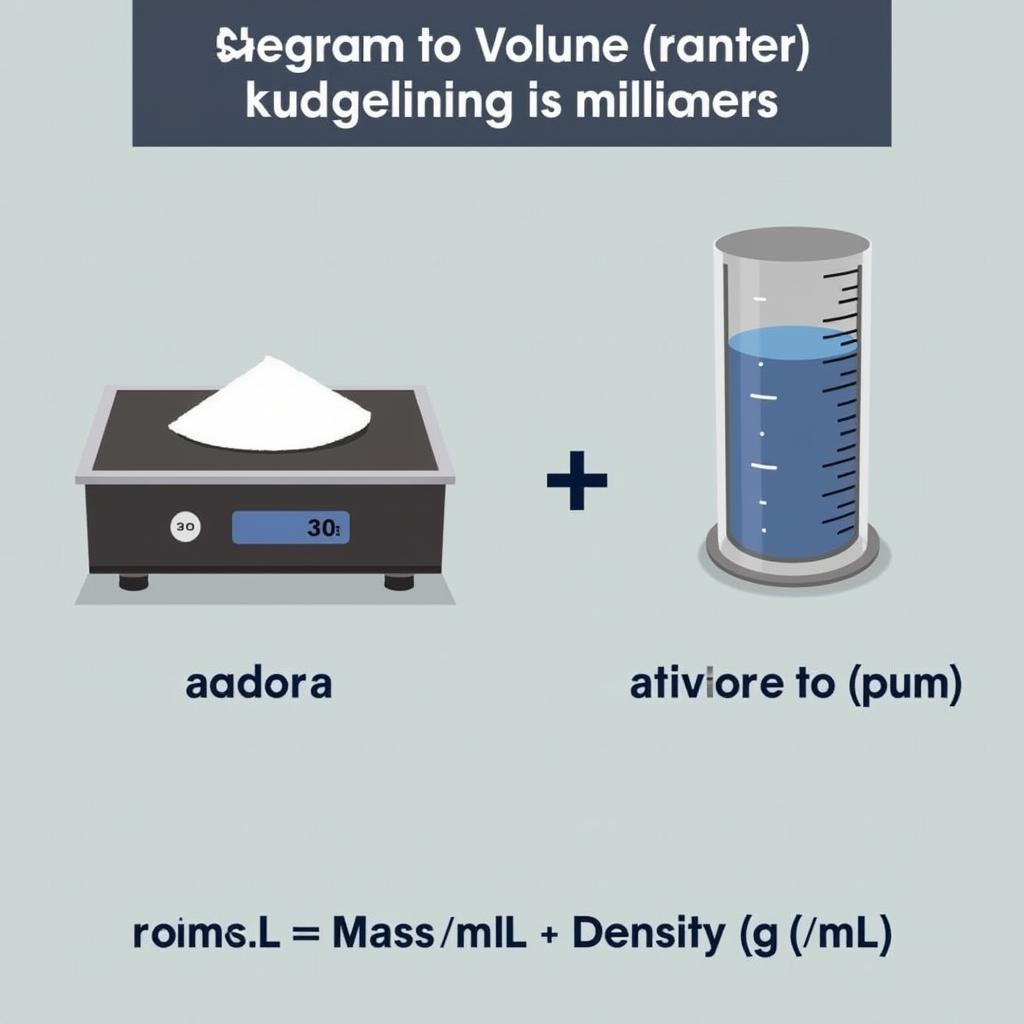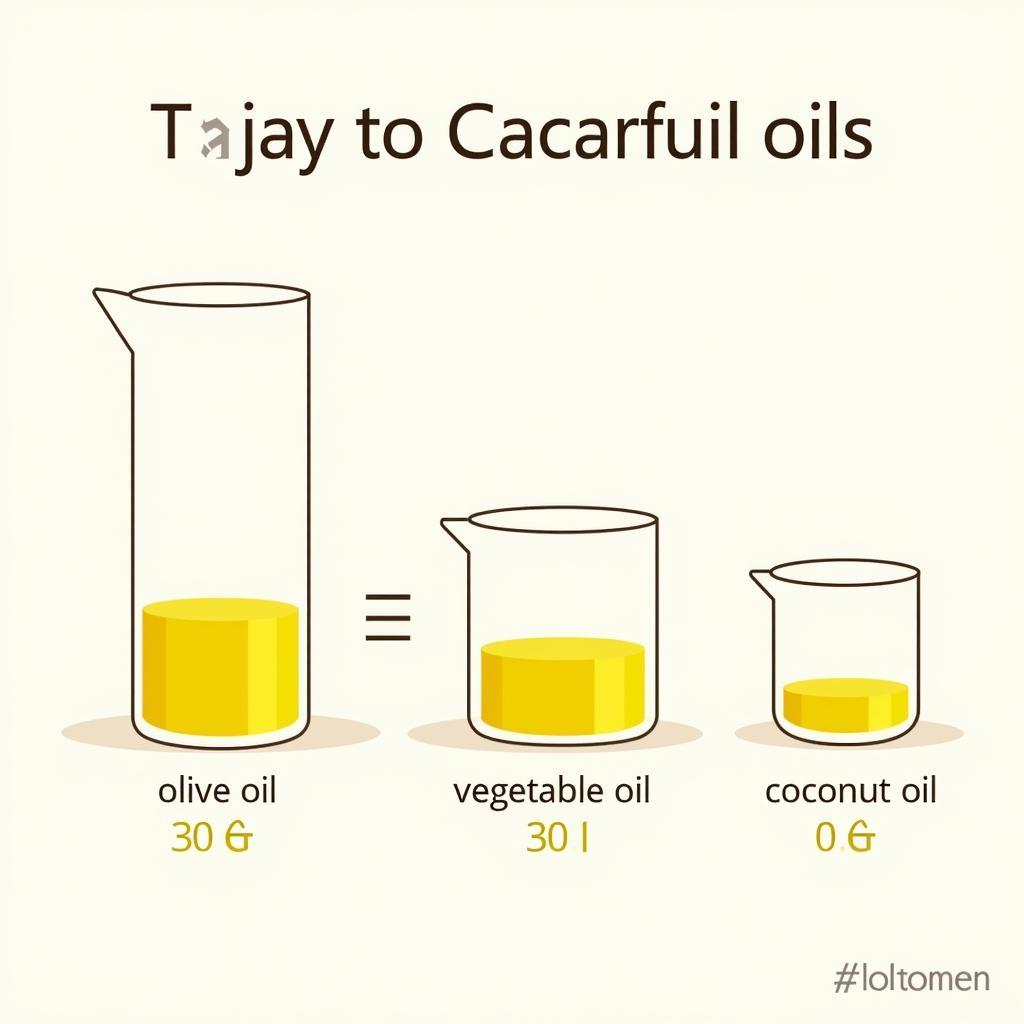How Many mL are in 30 Grams?
Understanding the relationship between grams (g) and milliliters (mL) is essential in various fields, from cooking and baking to scientific experiments and medication dosages. While you might initially think there’s a simple conversion, the question “How Many Ml Are In 30 Grams?” requires a bit more nuance. The answer depends entirely on the substance you’re measuring.
The Density Dilemma: Why Grams Don’t Directly Equal Milliliters
Grams measure mass (the amount of matter in something), while milliliters measure volume (the amount of space something occupies). The key link between them is density, which describes how much mass is packed into a given volume. A denser substance will have more mass in the same volume compared to a less dense substance.
For example, 30 grams of lead will occupy a much smaller volume than 30 grams of feathers, even though they have the same mass. This is because lead is significantly denser than feathers.
Calculating mL from Grams: The Density Formula
To accurately convert grams to milliliters, you need to know the density of the substance in question. The formula is:
Volume (mL) = Mass (g) / Density (g/mL)
So, to find how many mL are in 30 grams of a substance, you’ll divide 30 by the substance’s density.
 Conversion between grams and milliliters
Conversion between grams and milliliters
Common Substances and Their Conversions
Here’s a look at how this conversion works for some common substances:
- Water: Water has a density of approximately 1 g/mL. Therefore, 30 grams of water equals 30 mL.
- Milk: Milk is slightly denser than water, around 1.03 g/mL. 30 grams of milk would be approximately 29.1 mL.
- Flour: Flour’s density varies depending on the type and how it’s measured (packed or scooped). However, a common estimate is around 0.57 g/mL. This means 30 grams of flour would be approximately 52.6 mL.
- Sugar: Granulated sugar has a density of approximately 0.85 g/mL. Therefore, 30 grams of sugar is about 35.3 mL.
How Many mL are in 30 Grams of Oil?
Different oils have different densities. For example, olive oil has a density of around 0.92 g/mL. Therefore, 30 grams of olive oil would be approximately 32.6 mL.
 Calculating milliliters in 30 grams of oil
Calculating milliliters in 30 grams of oil
What if I don’t know the density?
If you don’t know the density, you can often find it online or in reference books. For ingredients like flour, using standardized measuring cups or spoons is usually more practical than trying to convert from grams to milliliters.
Practical Applications of Grams and Milliliters
Understanding these conversions is crucial in many situations:
- Cooking and Baking: Precise measurements are key for consistent results.
- Scientific Experiments: Accuracy in measuring chemicals and solutions is paramount.
- Medical Dosages: Correctly converting between units can be a matter of life and death.
“Accurate measurement is the cornerstone of any scientific endeavor, whether it’s in the lab or in the kitchen,” says Dr. Amelia Carter, a renowned chemist and culinary enthusiast. “Understanding the relationship between mass and volume is fundamental to achieving consistent and reliable results.”
Conclusion
While the question “how many mL are in 30 grams?” doesn’t have a single answer, understanding the role of density provides the key to solving this conversion. Remember to always consider the density of the specific substance you are working with. By using the density formula, you can accurately convert between grams and milliliters for various applications, from culinary creations to scientific explorations.
FAQ
- Why can’t I directly convert grams to milliliters? Because grams measure mass and milliliters measure volume, and the relationship between them depends on the density of the substance.
- Where can I find the density of a substance? You can often find density information online, in reference books, or on product labels.
- Is it always necessary to convert grams to milliliters in cooking? Not always. For some ingredients, like flour, using measuring cups or spoons is more practical.
- What is the density of water? Water has a density of approximately 1 g/mL.
- How do I calculate the volume from mass and density? Use the formula: Volume (mL) = Mass (g) / Density (g/mL).
- Why is understanding density important? Because it allows you to accurately convert between units of mass and volume.
- What are some examples of where this conversion is used? Cooking, baking, scientific experiments, and medical dosages.
When you need support, please contact Phone Number: 0989060241, Email: [email protected] Or visit the address: Lot 2, Hamlet 5, An Khuong, Hon Quan, Binh Phuoc, Vietnam. We have a 24/7 customer care team.

